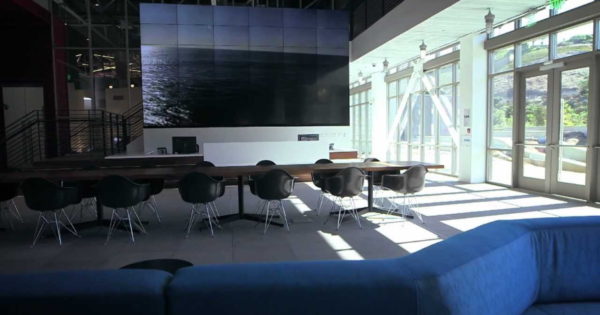Wendy's brings back ‘Where's the Beef?’ in industry's latest nostalgia play
CMO promises a fresh take on Wendy's iconic slogan, joining other restaurants in classic revivals.

Wendy’s is reviving its famous “Where’s the Beef?” slogan, beginning this weekend at the Daytona 500 and likely continuing through March Madness. The chain joins rivals such as Burger King and McDonald's that are putting new twists on classic fast-food marketing in a move to energize old fans while winning new ones.
Wendy's slogan—part of one of the most iconic campaigns in fast food history—will be referenced in promotions around Wendy’s sponsorship of a car in this weekend’s Daytona 500, part of an effort to differentiate the chain's square burgers.
“‘Where’s the Beef?’ was an iconic campaign in the 1980s highlighting our high-quality, fresh, never frozen square hamburger that became a part of culture,” Carl Loredo, chief marketing officer of Wendy’s, said in emailed comments. “We think it's time to revisit the power of the past with a fresh marketing take to connect with our customers and continue to celebrate our proven track record of delivering the freshest, hottest and juiciest hamburgers for our fans.”
In 1984, “Where’s the Beef?” began as an exclamation of a woman looking at a big bun and a tiny burger in a commercial that contrasted the size of Wendy’s burgers vs. those of its competitors.
The phrase soon became a meme to comment on any lack of substance; as when Walter Mondale disparaged Gary Hart’s economic platform in the 1984 Democratic primaries.
Wendy’s has made periodic references to “Where’s the Beef” over the years. In 2020, it used the slogan to address a beef shortage. In 2016, it ran advertising asking “Where’s the Beef … from?” to highlight its sourcing.
The revival at the Daytona 500 comes as Wendy's approaches one of its biggest marketing events of the year, the NCAA March Madness men's and women's basketball tournaments.
At the race, driver Noah Gragson's No. 42 Camaro will be outfitted with Wendy’s branding including a depiction of Wendy’s mascot in a racing helmet and goggles, and an enormous Dave’s Double cheeseburger on the hood beneath the words THE BEEF.
Related: Nascar's 75th birthday campaign looks back and forward
Other promotions at Daytona make reference to Wendy’s square hamburgers including a pop-up restaurant space in the infield marked by a 22-foot-tall square hamburger patty. Wendy’s is inviting Nascar fans to “look for the square,” through a QR code scavenger hunt, and hosting an on-site “Winner’s Square” experience.
Press materials urge customers to look for QR codes asking “Where’s the Beef?” at home, offering prizes such as Wendy’s hamburgers for a year, Wendy’s app offers, Daytona swag kits, or a custom video message from Gragson.
In the spirit of “Where's the Beef,” Loredo took a swipe at the paint scheme of McDonald's Daytona entry.
‘Nostalgia chic’
Wendy's joins other fast-food purveyors who have looked backwards to forge into the future. Burger King’s reboot of its “Have It Your Way” heritage—modernized behind contemporary interpretations of its 1970s jingle—has been the most prominent but BK is hardly alone. KFC has consistently used its classic “It’s Finger Lickin’ Good” slogan in recent years, but last year tweaked it to say “That’s Finger Lickin’ Good,” a move brand execs say shifts focus from the company lauding its food to its customers’ perceptions of it.
“This back-to-the-future approach adopted by many restaurant chains reflects what I think of as nostalgia chic,” said Nancy Kruse, president of the Kruse Company, an Atlanta-based restaurant consultant. “Established brands are revisiting and revitalizing their past successes in order to win younger consumers, for whom these campaigns are new, while winking at older customers, for whom they're familiar. We'll see lots more of these going forward, I think.”
In October, McDonald’s rolled out the Cactus Plant Flea Market box, an “adult” version of its Happy Meal which included a collectible toy, Chicken McNuggets or a Big Mac, fries and a drink. The promotion was a wild success for the Golden Arches, said CEO Chris Kempczinski, re-engaging customers with its core menu items while providing a “sentimental” experience for adult customers who grew up on Happy Meals in the 1980s and 1990s.

McDonald's Cactus Plant Flea Market box was a hit in 2022
Credit: Cactus Plant Flea Market x McDonald’s
Restaurants are returning to classic ads to recapture lapsed consumers while using proven strategies to attract younger diners, said John A. Gordon, founding principal of Pacific Management Consulting Group. “Quick-service restaurants over-index with older customers and agency research may be pointing to that fact,” Gordon said. “Why not re-use some of these powerful advertising equities that were created years and years ago? It’s a good ROI on your advertising equity.”
The nostalgia boom goes well beyond restaurants, said Noel Cottrell, partner and creative chair at Giant Spoon, who previously worked with Wendy's as the chief creative officer of its agency, VMLY&R. Cottrell cited movies coming this year including reboots of “Teen Wolf” and “Teenage Mutant Ninja Turtles,” as well as “Legally Blonde 3” and “Creed III” (which is “basically ‘Rocky 12,’” Cotrell said).
Similarly, Super Bowl ads offered up nostalgia ranging from a “Caddyshack” tribute to aging entertainers such as Ozzy Osbourne, Elton John and Sarah McLachlan taking starring roles in ads.
Watch all the Super Bowl commercials
From Bud Light to Rakuten and Amazon, see all of the ads
In fast food, where chains are constantly trying to drive same store-sales behind combinations of innovation and discounts, brands need a strong underlying brand platform, Cottrell said.
Over the years working with Wendy's, Cottrell said, “I wasn’t in a big TV meeting where [“Where’s the Beef”] wasn’t talked about or even presented.” He noted the chain's ongoing campaign includes its Wendy character who is not only nostalgic but a star on social media. That truly is a blend of the new and old.

Jon Springer is a Senior Reporter for Ad Age, covering food and CPG marketing. He formerly covered the food retail industry for Winsight and Supermarket News, and is a former sports and features writer for The Cecil Whig, a daily newspaper in Elkton, Md.

 Hollif
Hollif 































